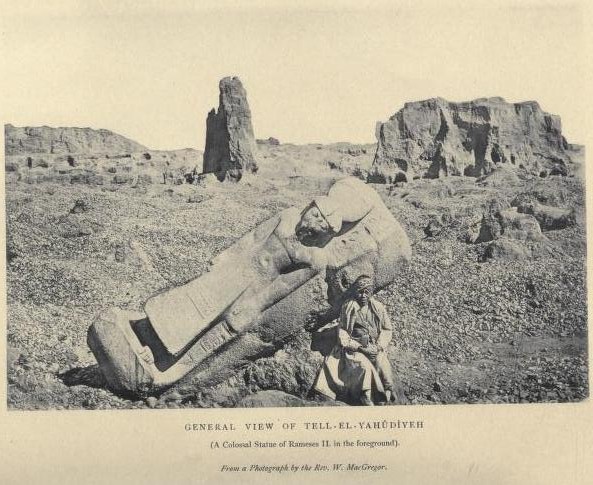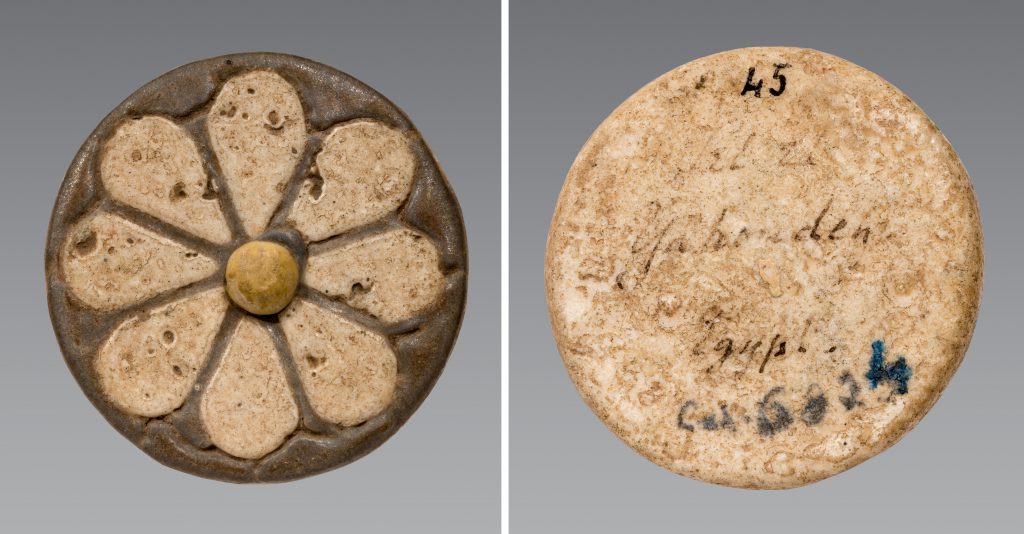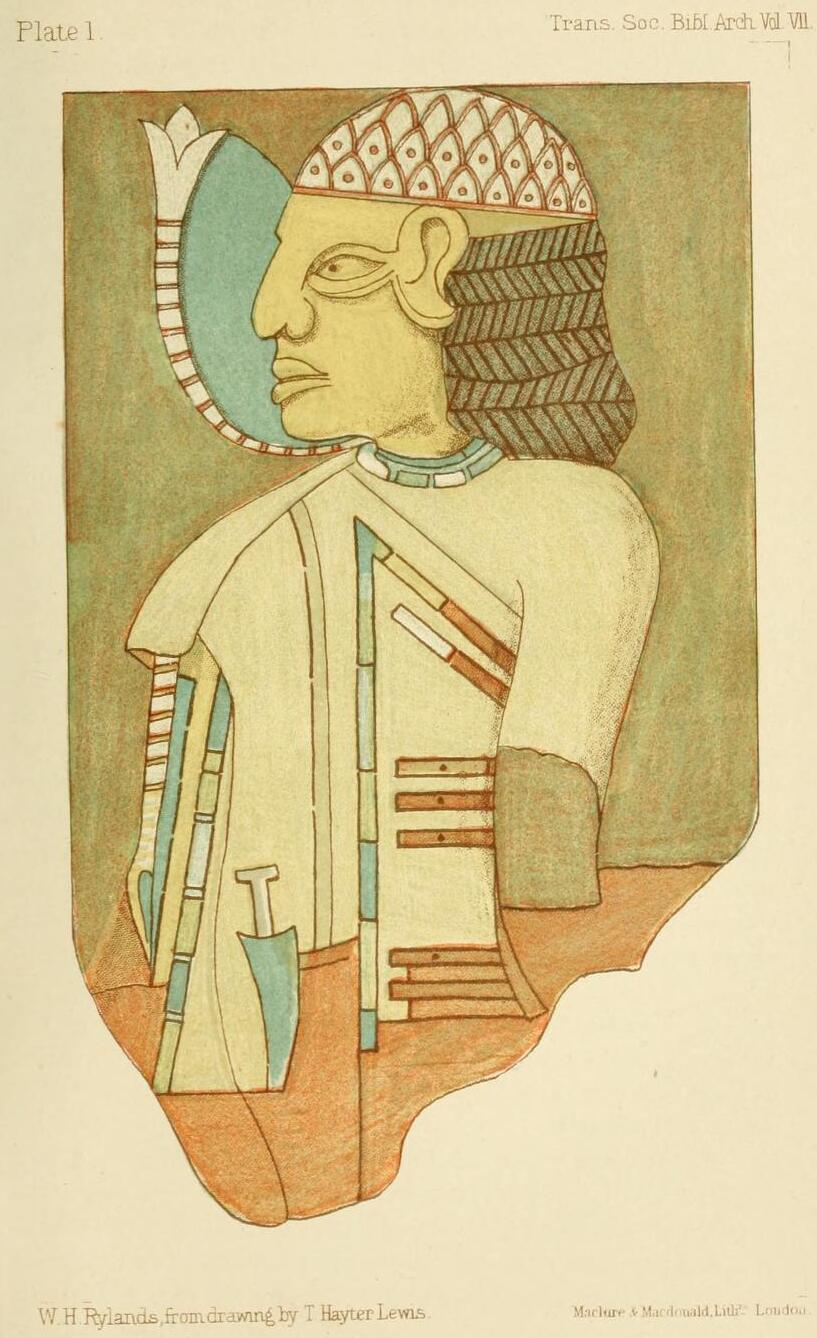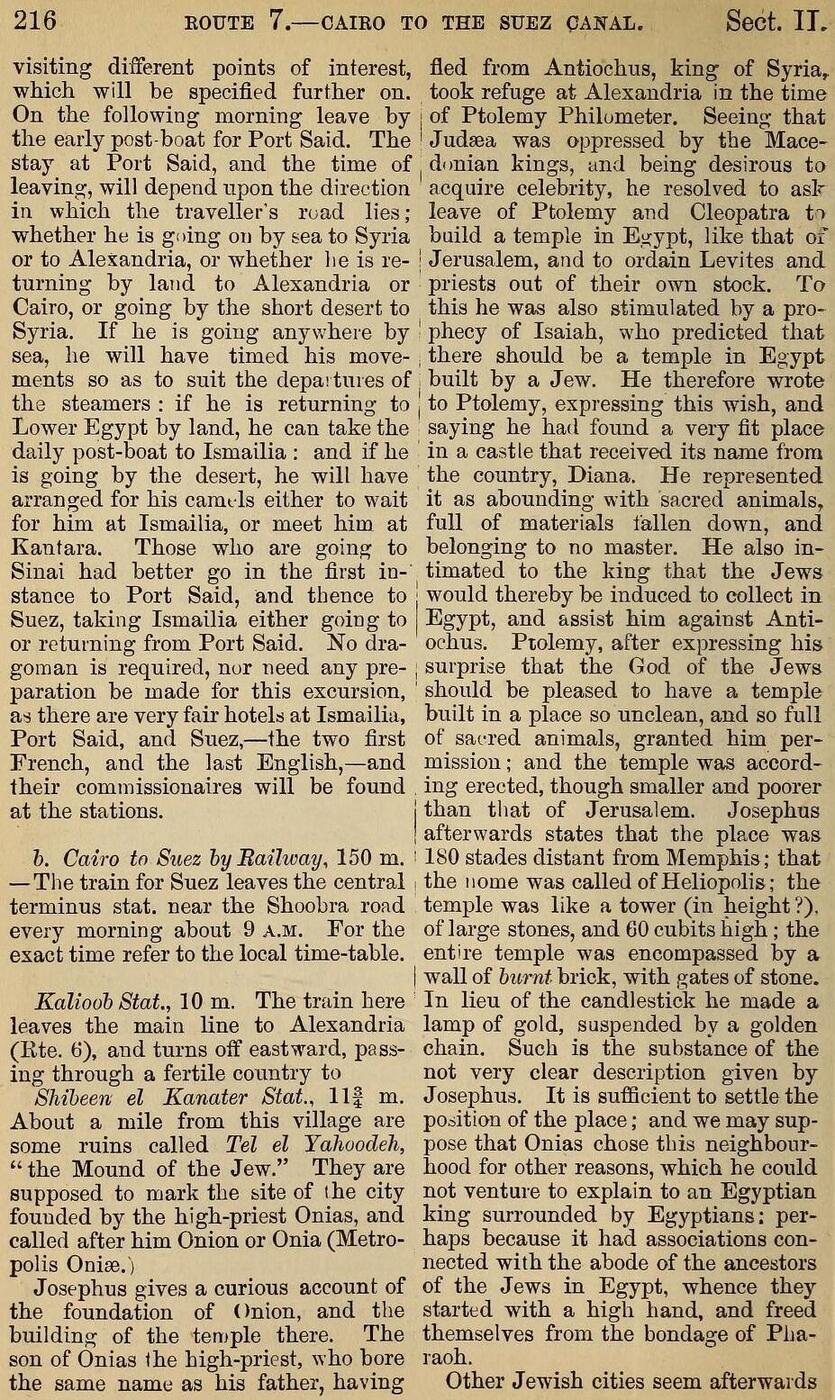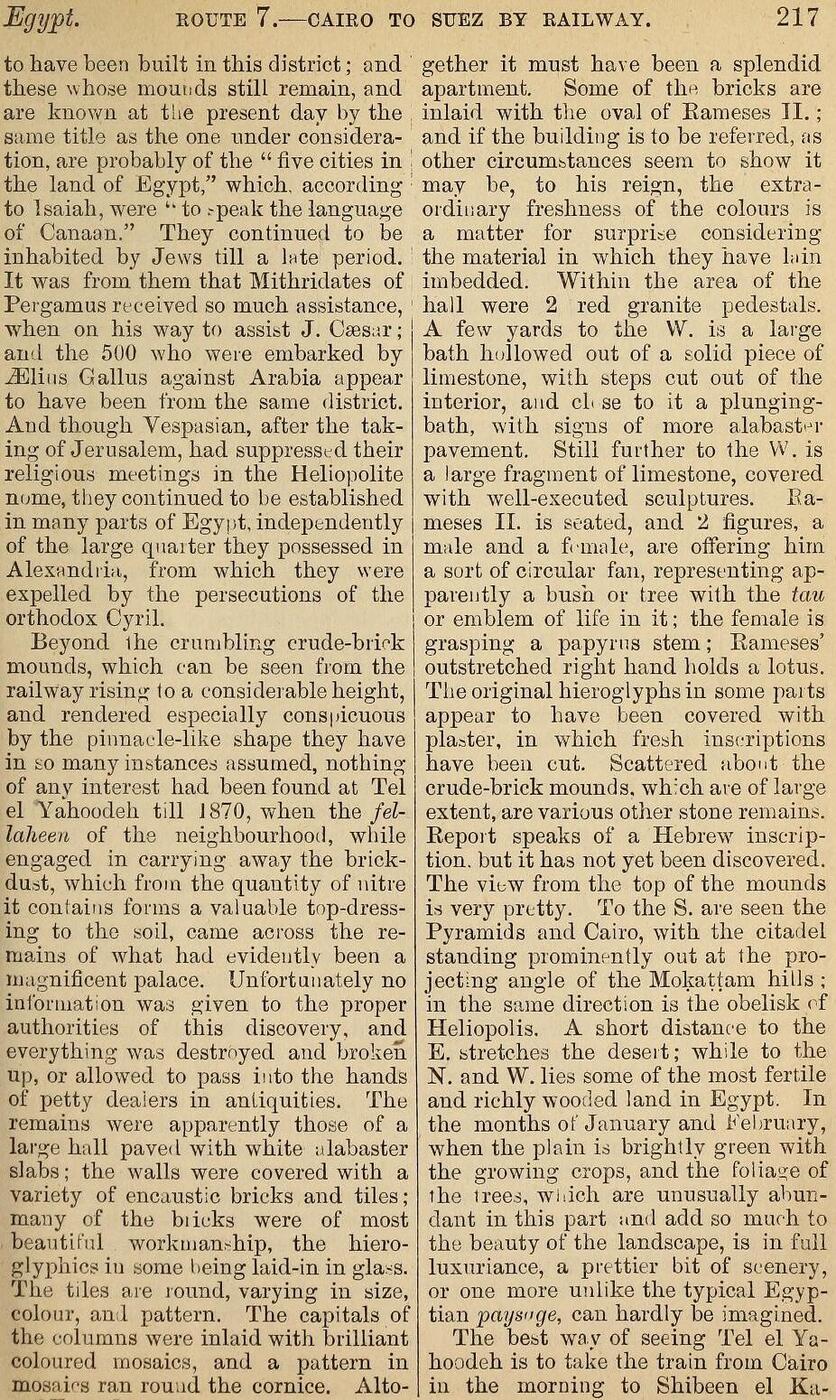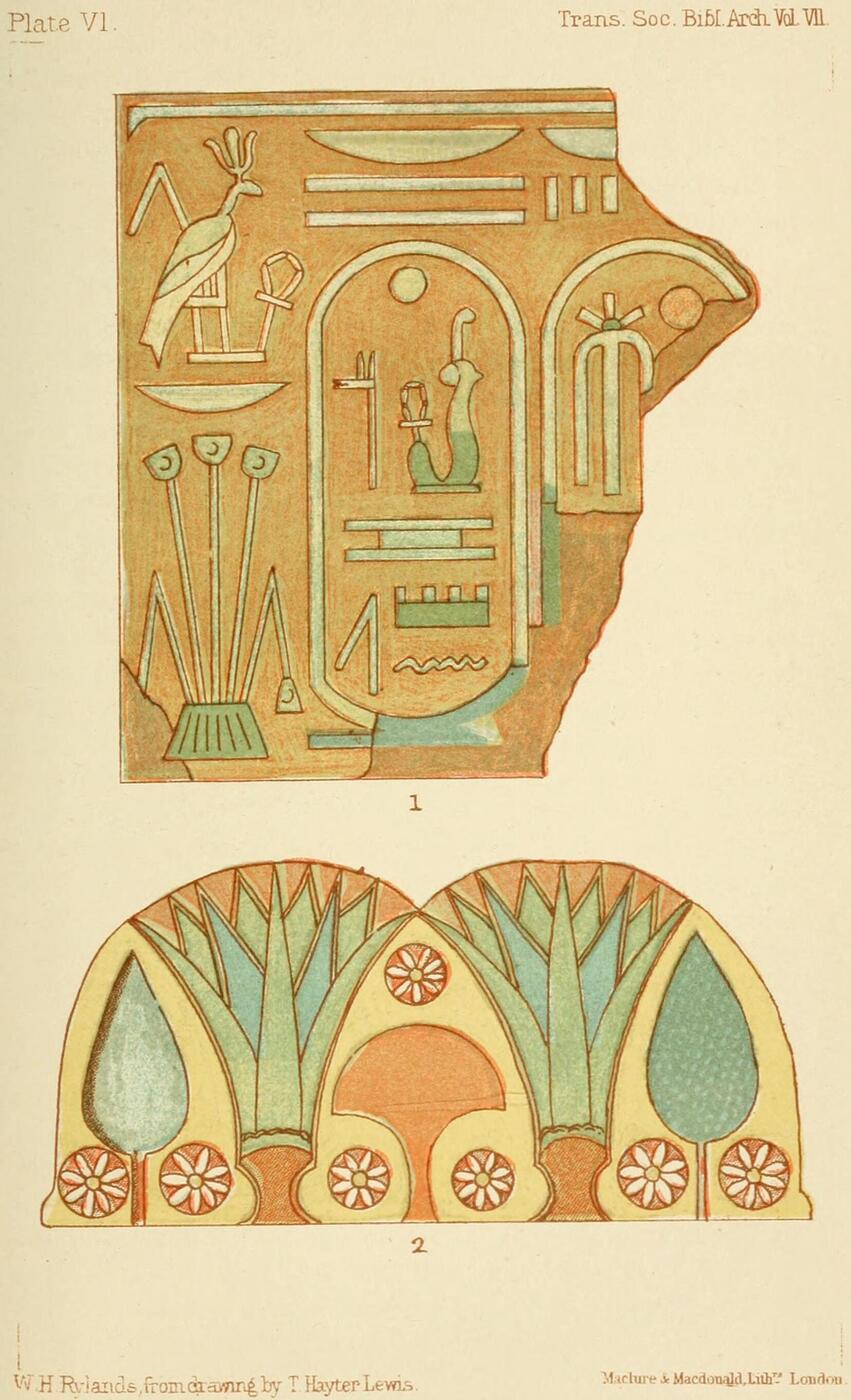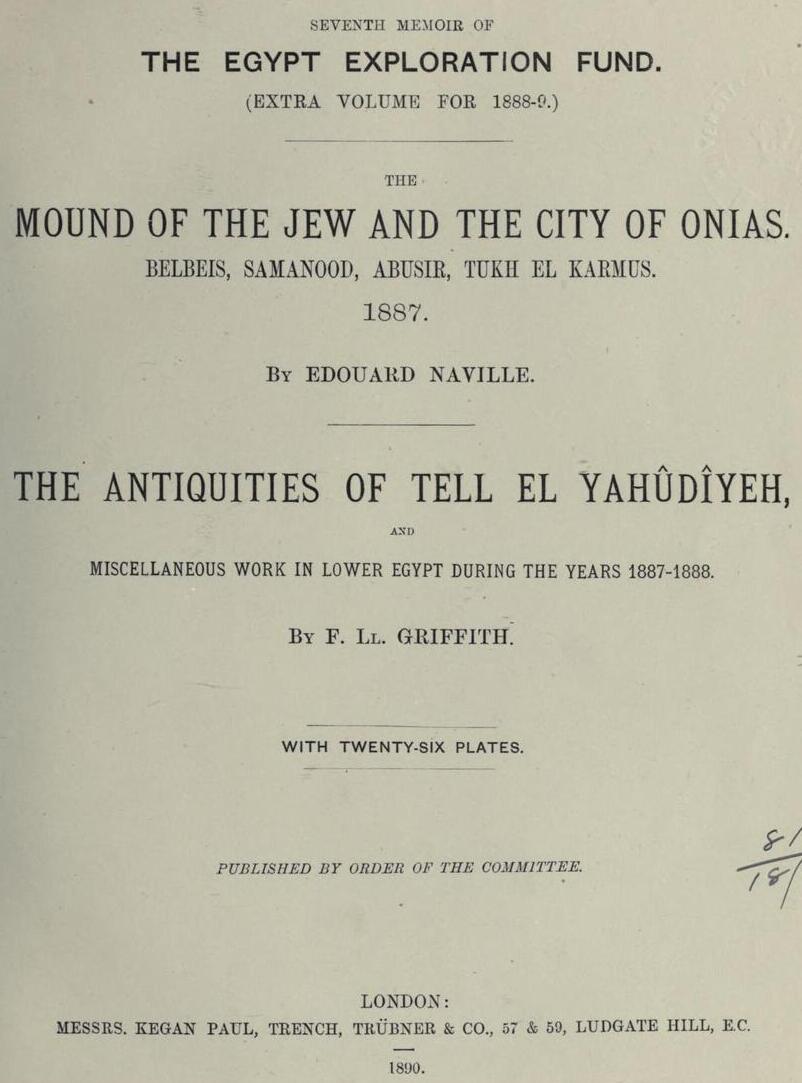|
Other Archaeological Sites / The Neolithic of the Levant (500 Page Book Online) Leontopolis (Greek) --Tell el-Yahudiya in Egypt
Updated November 10th 2019 Dictionary of Greek and Roman Geography by William Smith (1854) Leontopolis: In the reign of Ptolemy Philometor (B.C. 180--145) a temple, modelled after that of Jerusalem, was founded by the exiled Jewish priest Onias. (Josephus: Antiquities of the Jews 13.3.3; in Hieronymus Daniel Chapter xi). The Hebrew colony, which was attracted by the establishment of their national worship at Leontopolis, and which was increased by the refugees from the oppressions of the Seleucid kings in Palestine, flourished there for more than three centuries afterwards. In the reign of Vespasian the Leontopolite temple was closed amid the general discouragement of Judaism by that emperor (Josephus: The Jewish War 7.10.4) Josephus: Antiquities of the Jews 13.3.1-3 [62] BUT then the son of Onias the high priest, who was of the same name with his father, and who fled to king Ptolemy, who was called Philometor, lived now at Alexandria. When this Onias saw that Judea was oppressed by the Macedonians and their kings, out of a desire to purchase to himself a memorial and eternal fame he resolved to send to king Ptolemy and queen Cleopatra, to ask leave of them that he might build a temple in Egypt like to that at Jerusalem and might ordain Levites and priests out of their own stock. The chief reason why he was desirous so to do was that he relied upon the prophet Isaiah who lived above six hundred years before and foretold that there certainly was to be a temple built to Almighty God in Egypt by a man that was a Jew ... Now I found a very fit place in a castle that hath its name from the country Diana; this place is full of materials of several sorts and replenished with sacred animals; I desire therefore that you will grant me leave to purge this holy place which belongs to no master and is fallen down and to build there a temple to Almighty God after the pattern of that in Jerusalem and of the same dimensions that those Jews which dwell in Egypt may have a place whither they may come and meet together in mutual harmony one with another ...
"King Ptolemy and queen Cleopatra to Onias, send greeting. We have read thy petition, wherein thou desirest leave to be given thee to purge that temple which is fallen down at Leontopolis, in the Nomus of Heliopolis, and which is named from the country Bubastis; on which account we cannot but wonder that it should be pleasing to God to have a temple erected in a place so unclean and so full of sacred animals" ... So Onias took the place and built a temple and an altar to God like indeed to that in Jerusalem but smaller and poorer ... Onias found other Jews like unto himself together with priests and Levites that there performed Divine service ...
Leontopolis (Egyptian: Ney-ta-hut) is the Greek name for the modern area of Tell el Yehudiye or Tell el-Yahudiya (Egyptian Arabic: Jewish Mound). It was an ancient city of Egypt in the 13th nome of Lower Egypt (the Heliopolite Nome) on the Pelusiac branch of the Nile. This site is known for its distinctive pottery known as Tell el-Yahudiyeh Ware ... Linant identified the site in 1825[1][2] but Niebuhr had identified it earlier in the late 18th century[3] [WikiPedia] Travels through Arabia and other countries in the East by Carsten Niebuhr --- Volume 1 (1792)https://ancientneareast.tripod.com/PDF/b28773263_0001.pdf Travels through Arabia and other countries in the East by Carsten Niebuhr --- Volume 2 (1792) https://ancientneareast.tripod.com/PDF/b28773263_0002.pdf On Linant and Tel-Yeuhoud ou Monticule des Juifs read Page 139 in Mémoires sur les principaux travaux d'utilité publique, exécutés en Egypte depuis la plus haute antiquité jusqu'à nos jours (Texte) — Paris 1873
Oriental Literature Applied to the Illustration of the Sacred Scriptures
The Biblical Repository --- Volume 2 (1832)
Niebuhr in Egypt: European Science in a Biblical World by Roger Guichard (2014)
Three Faience Rosette Discs in the Museo Egizio in Turin: The Early Ramesside Pharaohs in the Eastern Delta and Their Glittering Palaces by Virginia Webb (22 dicembre 2017)
Tell el-Yahudiyeh–Leontopolis: the history of its discovery and destruction https://ancientneareast.tripod.com/PDF/Tell el Yahudiyeh Leontopolis.pdf
Tell el-Yahudiyeh --- the site of an important temple of Ramesses III and associated palace (both now destroyed) in the Eastern Delta which has indeed yielded many of these rosette tiles. An early example of the dismemberment of the building may be the rosette disc [from Yahudiyeh] with pierced central hole found in an Early Geometric burial in Rhodes. The history of the site and the fate of the building, which was decorated with “enamel tiles”, is succinctly given by Naville in his introduction to his excavations there (See below The Mound of the Jew). The monticule of Tell el-Yahudiyeh (The Mound of the Jew) was an early focus for European savants and was given much attention because of its name and supposed association with the Bible story of the Exile of the Jews in Egypt. Carsten Niebuhr mentions seeing it but from a distance of two leagues and opined that it was the site of the city of Onias and not (as previously believed) Heliopolis 25. According to Maspero 26 ... it had been pillaged since the beginning of the nineteenth century and ever since Linant had visited the site (possibly in 1825) and seen the process of destruction in full swing. And there is ample evidence from records of faience rosettes and other tiles now in the Louvre that material was already being extracted from the ruins of the site in the first half of the nineteenth century. The first to visit there for the purpose of study was Brugsch-Bey in 1870. His attention had been drawn to the mound because of some very fine enamelled tiles and inlaid ornaments which he had bought from a dealer. What he found was impressive although it was apparently impossible to reconstruct the plan of the building. He brought back all of ...
3600 disks of various sizes […] (as well as) […] tiles, flowers, birds, animal and portraits of Asiatic or negro prisoners […] and fragments of hieroglyphic inscriptions ...
However Brugsch-Bey regrets that he was not immediately able to institute excavations there in the summer of 1870 and adds that by the time he did start in the autumn the delay was sufficient for the removal of a considerable quantity of these curious monuments, now scattered among the different collections of Europe 32 Amongst others, the English had already been there! Mr Eaton and Reverend Greville Chester had already explored/picked over the Tell and their finds now in the British Museum (some originally in the Victoria and Albert Museum and elsewhere in London) were discussed in a paper by Professor Hayter Lewis (See Below 1881). His published plan is of some interest (Figure 4).
In 1887 Gaston Maspero would write about the building which had yielded such material in a report 34. This account is echoed by Naville and Griffith (See Below 1890) who were excavating in the same year and what is more they opined that ...
the discovery [of the enamel tiles] has been fatal to the mound. There is no place in Egypt where the fellaheen have worked such wanton destruction or so thoroughly carried away whatever could be taken ... Subsequent excavation by Petrie in 1905–6 concludes the sorry saga:
A careful gleaning of the site of his [Ramesses III] palace at Tell el Yahudiyeh has produced some dozens of pieces of the glazed tiles with figures and shown that nothing more is to be hoped for from that ground 36.
A Handbook for Travellers in Egypt --- John Murray (Publisher) 1873 https://ancientneareast.tripod.com/PDF/A_Handbook_for_Travellers_in_Egypt.pdf
nater and return by the afternoon train which passes about 4 p.m. Continuing our journey through a very fertile and wooded country, quite different in aspect from the monotonous plain through which the railway passes between Alexandria and Cairo, we reach ...
Egypt : handbook for travellers : part first --- lower Egypt with the Fayum
Transactions of the Society of Biblical Archæology: Volume VII (1881) https://ancientneareast.tripod.com/PDF/transactions07soci.pdf ... and soon became interested in it [mound] from the peculiar character and beauty of much of the decorative work brought to the British Museum from the Tell (mound). This is situated about twenty miles from Cairo on the road to Ismailiya and is marked out by tradition as the site of the temple built by Onias in the time of Ptolemy Philometer circa B.C. 160 ... The ruins were first explored in modern time in 1870 and a description of the site is given in Murray's Handbook to Egypt ... Some few antiquities from the same locality are in the Louvre and many others in the Egyptian Museum at Boulak. I do hope that the Trustees of the British Museum may be induced to aid inquiry in the case of the Tel-el-Yahoudeh and by a small grant enable us to learn the history of this interesting site and save from the destructive hands of the Arabs the antiquities which still remain of the temple or palace of Rameses and perchance of the still more interesting temple of Onias in the Mound of the Jew.
Of a different class are other tiles bearing as usual the titles of Rameses III, the body of the tile being of very fine clay, the pattern sunk in very sharply and delicately and then filled in with mosaic work in colours (Plate VI Figure 1). The second division of the tiles consists principally of circular inlaid rosettes and of other pieces which fit into each other and form a kind of decoration very much like the usual Assyrian border (Plate VI Figure 2). The article on TEL-EL-YAHOUDEH starts on Page 177
Lecture by Naville on "Bubastis and the City of Onias"
Ra user ma sotep en Amen which is his coronation name; and Aouput Si Bast Meramon which is his proper name. This coronation name was borne by several kings of the XXIInd and XXIIIrd Dynasties and especially by the most powerful of them -- Osorkon II; while the qualification of Si Bast, in the proper name, points to a Bubastite origin. We know two princes of the name of Aouput. One is the high priest of Amon, first general of the king, the son of Sheshonk I, the first of the Bubastites. This Aouput is the priest who took part in the restoration of the royal mummies found at Deir-el-Bahri. His name has been found once or twice. He may be the king of Tel-el-Yahoodieh but I think it is not likely. I believe we have to consider the new king as one of the local princes who fought against the Ethiopian invader Piankhi in B.C. 750. The conqueror in his inscription mentions all the petty kings who made war against him and one of them is called the king Auput who occupies the cities of Tentremu (the fish-city) and Taau, neither of which have yet been identified. His name is always included in a cartouche as well as that of Osorkon, the prince of Bubastis, and that of Namrath -- three names of the family of Sheshonk ; a fact which indicates that Piankhi considered them as being of royal blood. Who was the founder of the city ? Although we have found no cartouche of that epoch it is likely that the first settlers belonged to the time of the XIIth Dynasty. It is a curious fact that a considerable number of the small pots which are found by the natives in different parts of the Tel are exactly of the same pattern as those discovered at Khataanah two years ago and which, from the style of the scarabs found with them, have been attributed to the XIIth and XIIIrd Dynastys. I must say I do not feel so confident about the age of those small black pots with white ornaments as I did at Khataanah because at Khataanah there were monuments of the XIInd Dynasty and especially the remains of a temple; while at Tel-el-Yahoodieh there is nothing pointing to such an early epoch. However at Tel-el-Yahoodieh it is very possible that the monuments may have disappeared like many which were seen a few years ago. Brugsch noticed, for instance, several stones inscribed with the name of Seti I of which I did not see even a trace. However one thing seems certain -- it is an important point to which I shall refer further -- there are no remains of the XVIIIth Dynasty -- that line of great kings and conquerors. There is no more trace of them than at Bubastis. It is a curious fact also that it was impossible to discover the name of the ancient city. The only geographical names found there are those of Heliopolis, to the nome of which it undoubtedly belonged. Generally speaking geographical names occur much more abundantly on monuments of later date -- especially on tablets of the Ptolemies -- than in inscriptions of the Pharaohs. Besides we have no monuments of a character likely to furnish us with the name of the place such as dedicatory statues of priests and officials. The Pharaohs, like Rameses II, prefer in their religious inscriptions to mention the great gods like Amon, Tum or Set rather than the local divinity of each individual place. Thus at Tel-el-Yahoodieh we have Set (who is found everywhere in the Eastern Delta) and Harmakhis, who was the god of Heliopolis and the god of the nome. If we had discovered a Ptolemaic inscription we should certainly have found the local god mentioned, if there was one.
Memoirs of the Egypt Exploration Society by Edouard Naville and https://ancientneareast.tripod.com/PDF/The_Mound_of_the_Jew_and_the_City_of_Onias.pdf The Egypt Exploration Society is a British non-profit organization. The society was founded in 1882 by Amelia Edwards and Reginald Stuart Poole in order to examine and excavate in the areas of Egypt and Sudan.
Near the present station of Shibeen el Kanater the traveller sees the mound in the distance. I need not insist much on the form of the Tell, a plan of which has been published by Professor Hayter Lewis in illustration of his interesting paper on Tell el Yahoodieh. When Brugsch-Bey came to Tell el Yahoodieh to excavate in 1870 his attention had been directed to the place by some very fine enamelled tiles and inlaid ornaments from the time of Rameses III which he had purchased from a dealer at Shibeen el Kanater. But the discovery has been fatal to the mound. There is no place in Egypt where the fellaheen have worked such wanton destruction or so thoroughly carried away whatever could be taken. The only excavations hitherto made are due to Brugsch-Bey who gave some account of his work and stated his opinion on the name of Tell el Yahoodieh in an interesting paper lately published under the title of "On et Onion". On et onion by Emile Brugsch-Bey (1886)
Hyksos and Israelite cities by W. M. Flinders Petrie (1906) https://ancientneareast.tripod.com/PDF/hyksosisraelitec00petr_0.pdf |
